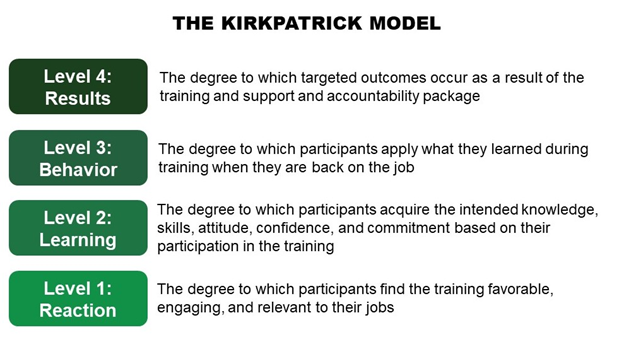Stop Avoiding Training Evaluation Because You Think It’s Too Hard

Do you avoid measuring the organizational value of your training because it seems too hard? Are you uncertain of where to begin? You are not alone.
Most learning and performance professionals understand the importance of measuring the impact of training. However, less than half of all training gets measured beyond Kirkpatrick Level 2 Learning.

Training budgets and positions are under scrutiny right now, so demonstrating the value that training provides to the organization is imperative.
Here are a few tips to simplify the measurement of your most important training programs.
Take Inventory of Existing Data
Many organizations are already gathering data on their top metrics and mission-critical initiatives. Instead of trying to evaluate training outcomes on your own, find out what is already being measured.
Reach out to your business stakeholders and business unit managers and ask them to show you the reports, data, and metrics they refer to on a regular basis to be sure that their efforts are on track. If your training is in alignment with their goals, their results should be the same types of results you are trying to impact.
Some examples of business outcomes that someone else may already be tracking are:
- Employee satisfaction
- Turnover
- Customer satisfaction
- Scrap or waste
- Throughput
- Inventory cost
- Daily sales
- Reportable incidents
Capture Qualitative Evidence
A good chain of evidence showing the value of training includes both numeric data and qualitative information, such as testimonials. When you reach out to training graduates and they informally share their feedback with you, think, “Is this something that could contribute to my chain of evidence?”
For example, if a training graduate mentions that she used the active listening techniques she learned in leadership training with a direct report and helped the employee to improve their performance, this is one piece of evidence of the value of the leadership development program.
Sometimes evidence is all around us; we just need to recognize and document it.
Identify and Fill the Gaps
Once you have identified the data being measured and started to capture testimonials, examine your growing pool of evidence, and look for gaps.
Do you have good information about business outcomes, but little or nothing related to on-the-job application? Do you have results from a reaction survey taken after the program, but no data on the learning that was accomplished during the session?
Make sure you have something at each of the four Kirkpatrick levels, with a strong emphasis on Kirkpatrick Levels 3 and 4 data and information.
Create a System for Saving Data and Information
Have you ever had an annual review with your boss and struggled to remember examples of the good work you did throughout the year? The same thing can happen when trying to show the value of a large training initiative.
- Create a folder at the beginning of the initiative and compile evidence of the value of the program along the way.
- Save reports that showing key business outcomes improving.
- Jot down notes when training graduates tell you about their successes on the job. Better yet, ask them to write a testimonial!
When it comes time to show the value of your program, you will have a variety of data and information at your fingertips.
Get Started!
Sometimes the most difficult part of training evaluation is just getting started. Select a key initiative and implement these ideas. Use it as a pilot and build your program evaluation methodology.
Now you have some tools so you can stop avoiding training evaluation. Hopefully you can see that it isn’t too hard. You can do this!
If you’re looking for the easy button, get Kirkpatrick certified. You will learn how to evaluate any program effectively at all four levels and come away with templates and tools to assist you.
By Jim Kirkpatrick and Wendy Kayser Kirkpatrick
Additional resources
Kirkpatrick bronze level certification
Free resources on the Kirkpatrick Partners website





